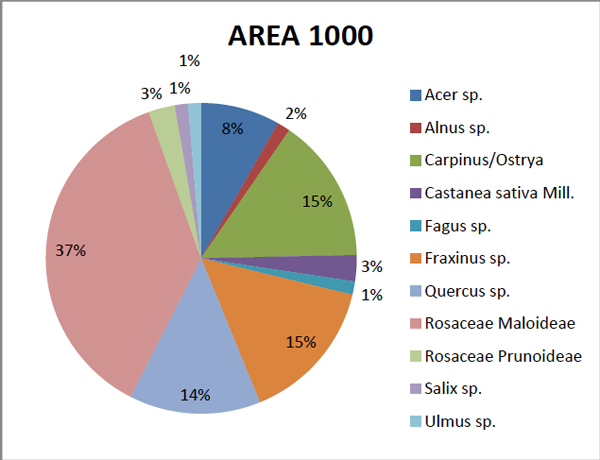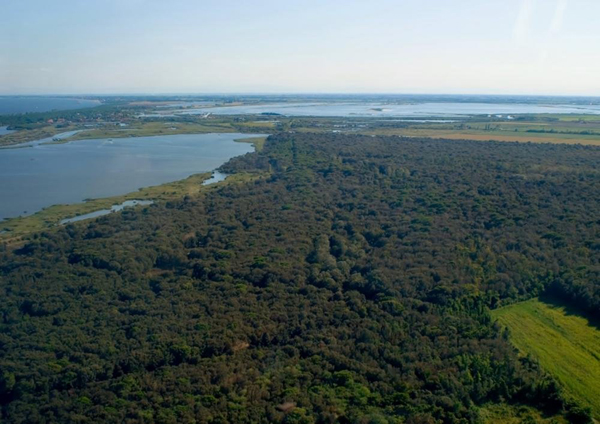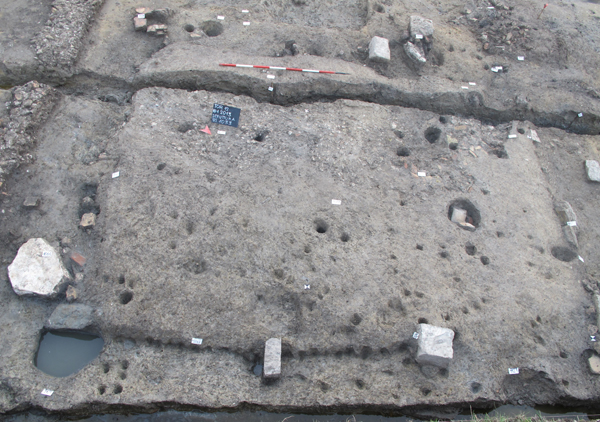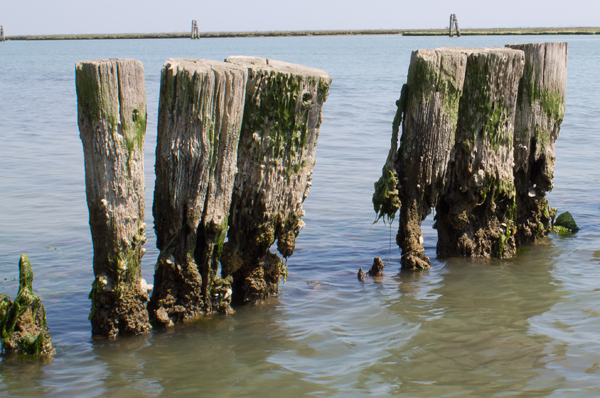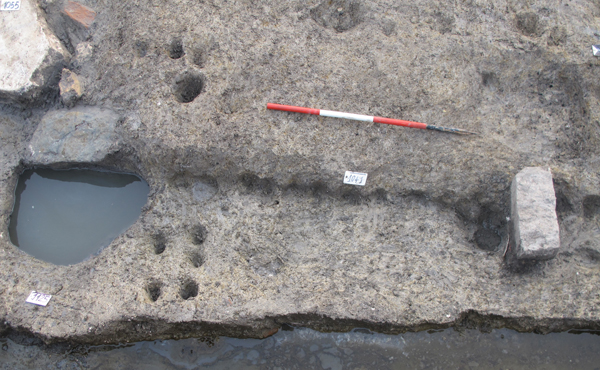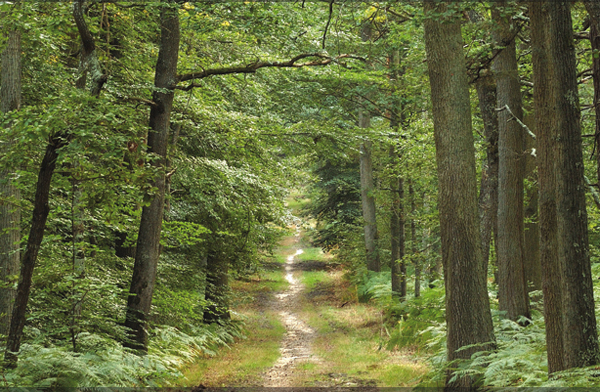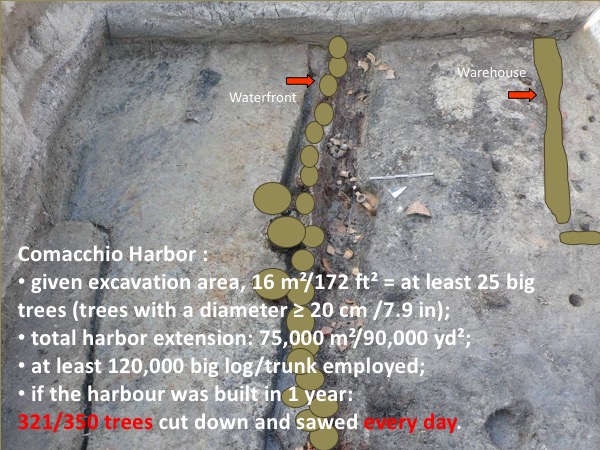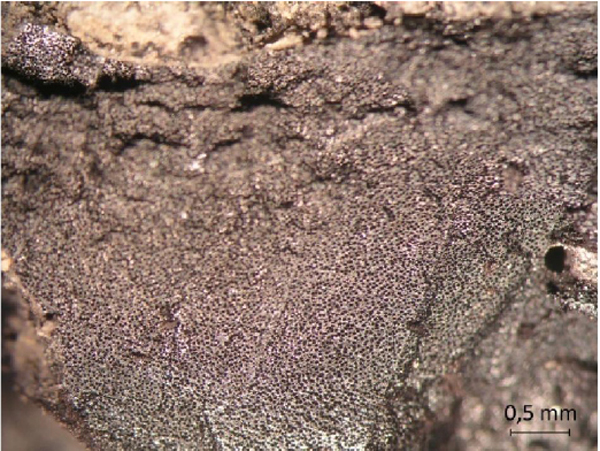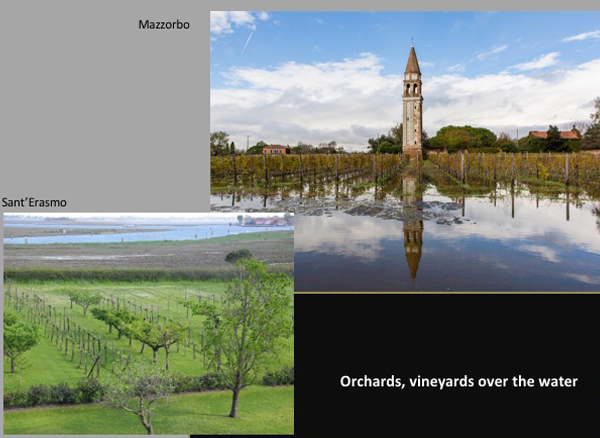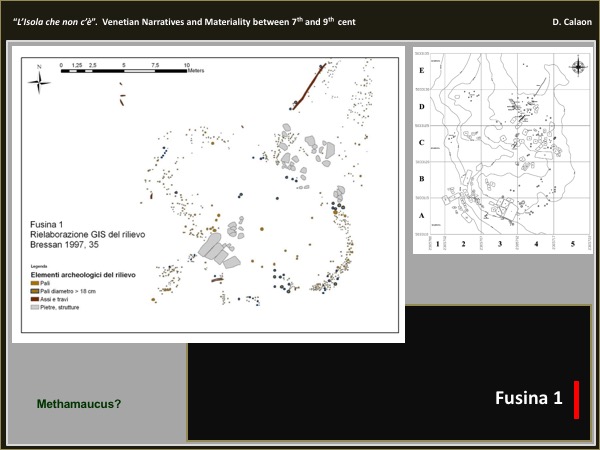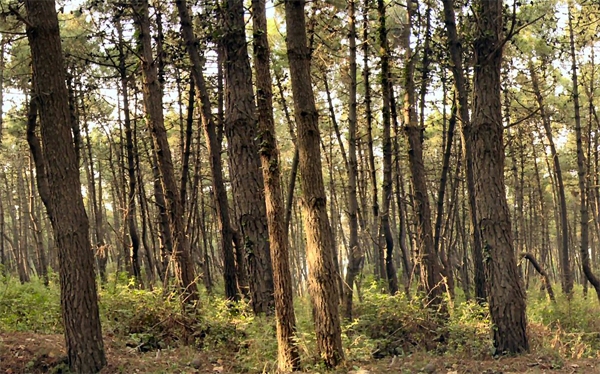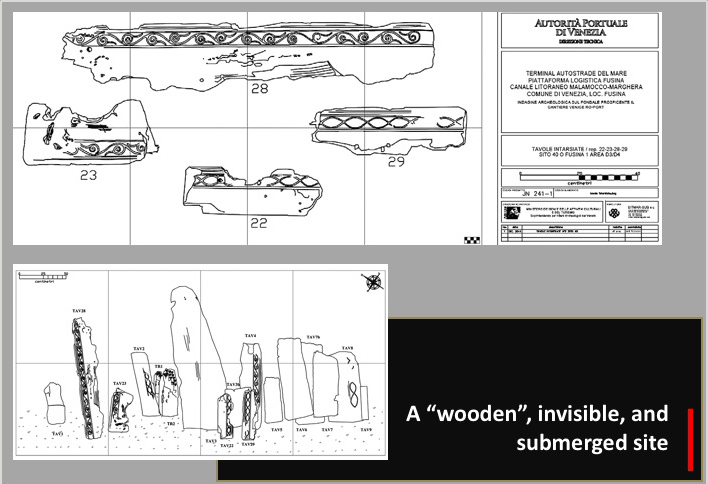Wood
The earliest Venice was not a city made of stone or bricks. It was built out of mud and wood.
In the past the first image of Venice was conceived by resorting to the idea of a foundation and we unwittingly imagine the ancient Venetici in the act of physically “raising” the most important buildings: the Doge’s Palace, St Mark’s basilica, the churches and monasteries. The foundation myth, as we learned it from an almost thousand-year tradition, imagines a city built with long-lasting materials – a city like Rome or Constantinople.
In the past archaeological studies in some ways confirmed this idea. When considering the many finds discovered in excavations and exhibited in museums, archaeologists were particularly attracted to stone fragments, especially those with inscriptions. But it was often the case that no one asked how and when these objects were brought to the lagoon. They were simply adduced as evidence pointing to the technological and cultural continuity between the ancient world and the new early-mediaeval Venice. Stones and bricks decay very little over time. Bricks and marble slabs come down to us in an easily recognisable form for the purposes of analysis during archaeological excavations. But their conspicuous presence may have deceived historians and archaeologists. In fact with Venice there needs to be a greater focus on the labile traces of wooden buildings – poles, planks, wattles, etc. – to fully understand the nature of early mediaeval building. The data now in our possession can confirm that 100 percent of the earliest civil buildings in the lagoon (houses, warehouses and craft workshops) were made of wood and mud.
Timber could be sourced in the woods and forests widely found in the coastal area: evidence of this comes from the analyses of ancient pollens and from interpreting palaeoenvironmental rock and sediment sampling. “Timber” was the typical building material in the lagoon. It gave built-up areas a distinctive style and its use has been documented in the construction of waterfronts, wharves, canal banks and landing stages as well as in civil buildings. Houses, craft workshops, warehouses and sheds for animals: the inhabited areas had buildings only made of boards, planks and poles. The wooden walls were then well finished with clays, insulating material and plaster. Very few buildings were entirely made of brick and stone, and they were mostly religious. But they were made by using recycled material, bricks and stones gathered in nearby abandoned Roman villas or deserted towns become quarries. Italian historiography – and to a certain extent also archaeology – has often unconsciously placed the accent on associating wooden housing and the presumed poverty of sites.
Even semantically wooden houses have always been classed as “huts”. This is due to mistaken perspective, influenced by the subsequent rise of the building paradigm of the Renaissance stone city. The very early Venice and Torcello were more like the Carolingian emporia, the trading-post settlements/cities of Northern Europe, than the Byzantine cities of the Mediterranean.Recent excavations on Torcello have yielded evidence of how the use of wood in 9th-century Venetian buildings actually reflected a very complex housing structure.
Wood and charcoal were equally indispensable for craft production. Lagoon excavations at Grado, Comacchio and Torcello have highlighted how glass production, for example, was one of the distinctive features of the economic life of the emporia. Glass objects were technologically advanced products sold to the elite on the mainland for considerable profit margins. The glass furnaces, but also those for local ceramic production, required the use of huge quantities of fuel. Ships, boats, rafts and piers were all made of wood. And they are the most typical elements in the early mediaeval Venetian cityscape.
There was thus an exceptionally large demand for wood and this implied a careful policy of managing the forests. If we take as an example the excavation of the port of Comacchio in the 8th century, we know that 25-30 large pole were required to build 16 square metres of piers and wharves, which meant 15-20 trees had to be chopped down. The port of Comacchio is reckoned to have extended for around 75,000 square metres: if we suppose that it took a year to build the port, it means that around 110,000-120,00 trunks had to be cut down, i.e. 300 trees a day.
The most representative image of Venetian wealth in the earliest days of the city was timber, not stone or marble. This wealth was guaranteed by ships (made of timber), the loading and unloading operations carried out on the wharves (made of timber) and the goods kept in warehouses (made of timber).
Last update: 11/07/2025

